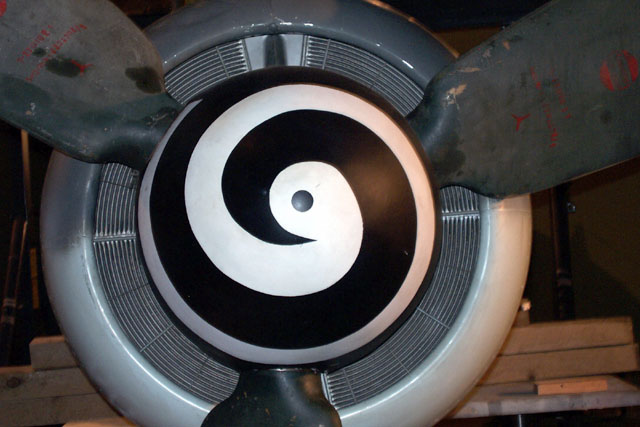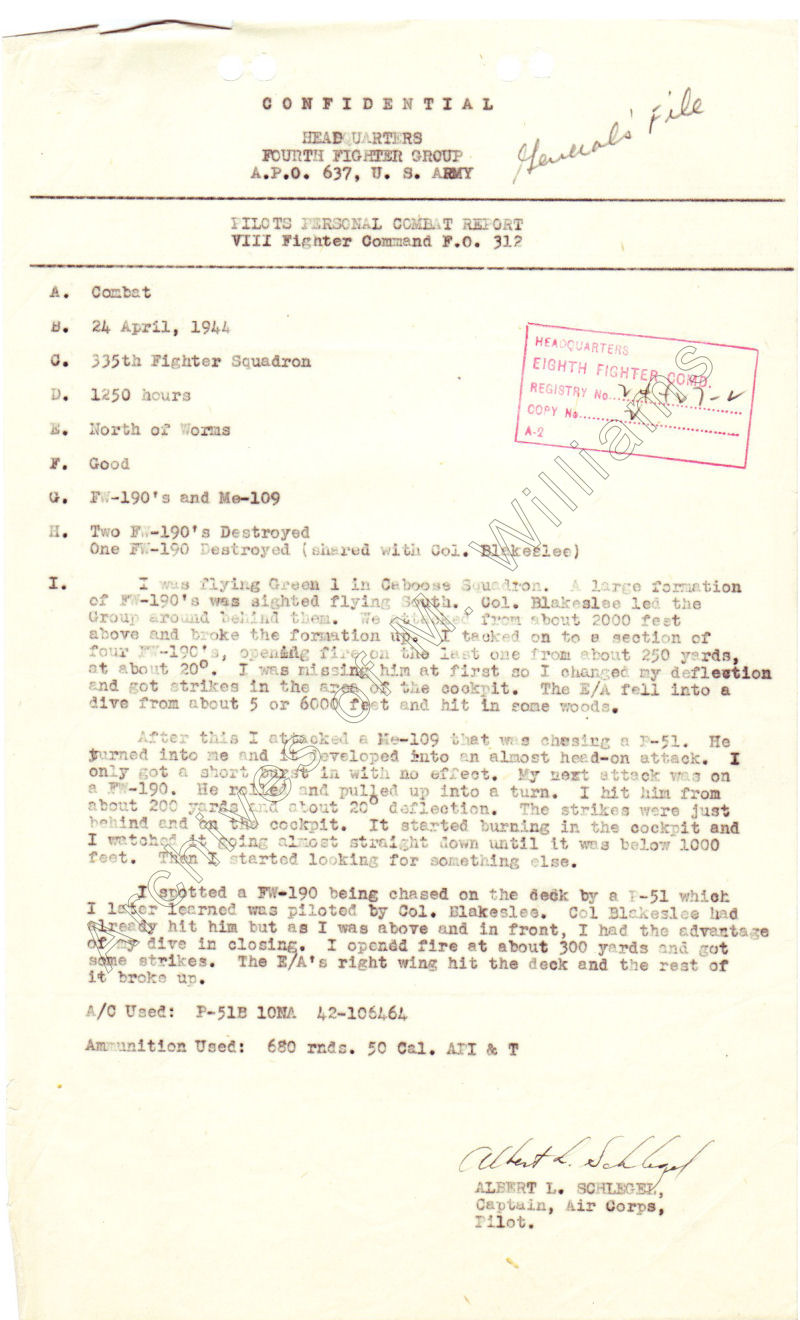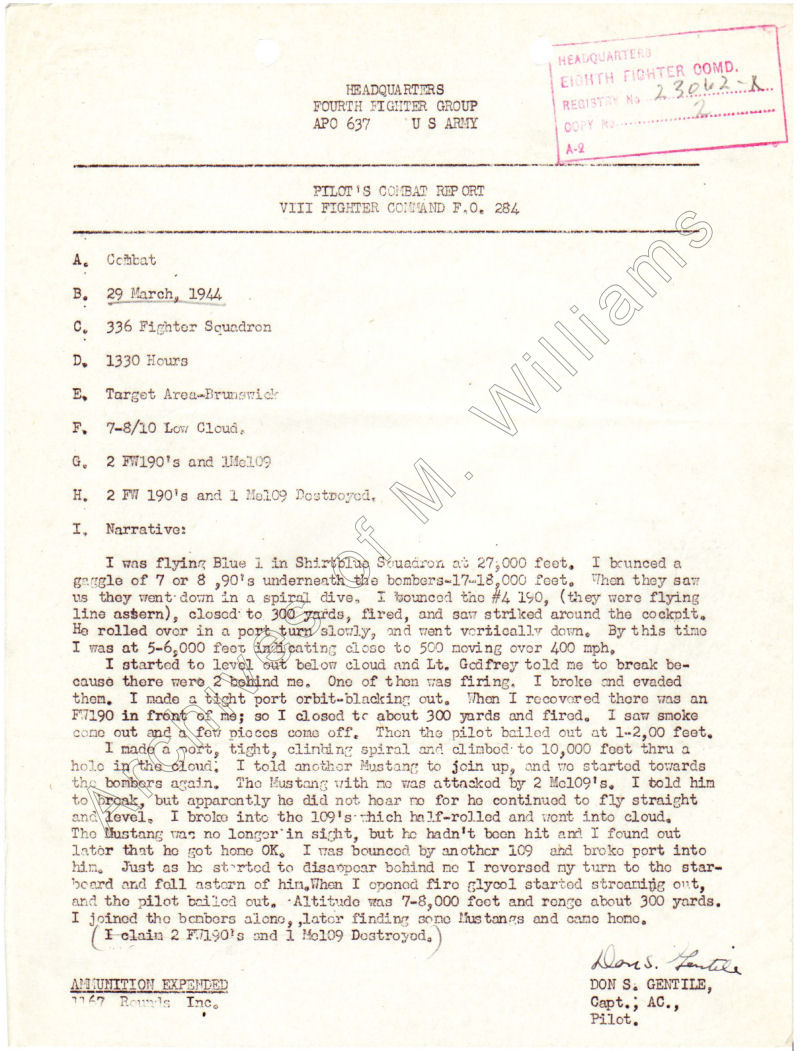Salute
I think it is important to understand that 90% of a WWII fighter aircraft was completely unarmoured. 90% of it was simply a light framework of aluminum, covered with thin aluminum sheet. This offered minimal protection against bullets.
Most aircraft armour was designed to protect the pilot or fuel tanks. The limited areas which were armoured normally was as follows:
Cockpit (Pilot) armour
a) a thick glass plate served as a front windshield, normally around 50mm thick, this was only effective against gunfire from directly ahead against rifle calibre bullets, and could be penetrated at medium and short ranges by .50 cals. The side cockpit glass, (usually plexiglass) was completely unarmoured.
b) the pilot's seat, back and headrest was hardened steel, normally around 8mm thick, thicker in aircraft such as the P-47, proof against light MG fire, but not proof against .50 calibre or higher. The seat offered protection from gunfire from directly behind and below, but not against shots from the side or above. In some Soviet aircraft, the headrest was replaced with a thick bullet proof glass shield to allow for better visibility to the rear. But this glass shield was usually not as effective as steel for protection.
Gas tanks
a) Gas tanks were constructed of thin sheet metal. With the exception of certain early war fighters, primarily Japanese, most gas tanks had an inner bladder, the construction of which comprised two layers of rubber, with a liquid rubber substance between. When a bullet penetrated the gas tank bladder, the liquid rubber would ooze out into the hole and seal it. Only small holes could be sealed, larger ones could not. A tank hit by a 20mm round or multiple .50 calibre rounds would not seal. Since the many bullets were inciendary, and the gases in partially empty tanks were extremely prone to exploding on contact with flame or sparks, some tanks also had anti-fire systems which involved the replacement of the gasoline fumes in the tank with other inert gases, not prone to exploding. Again, it didn't really matter when a big enough hole was made in the tank, the leaking gas was extremely flammable. The standard .50 calibre round was Armour Piercing Inciendary, (the tip being comprised of phosphorus, which ignites on contact with oxygen, ie. when exposed to air) so when hit by these, fire was a huge possibility. Self sealing tanks are not really armour, they are just a passive protection.
Tanks located in the wings of aircraft had no additional armour, but tanks in the fuselage of aircraft such as the FW-190 or P-47 often had additional thin, steel plates protecting them. These were not proof against .50 calibre or larger rounds.
Aircraft such as the FW-190 and P-47 which used air cooled engines often had armouring around the oil coolers, (the oil coolers were smaller than radiators, and could be more easily protected) if you look at the picture of the FW-190 below, you can see the oil cooler, and the outer cowling ring around it was armoured face hardened steel which offered some protection to the side and rear. (but not to the front)

Radiators had no armour and were extremely vulnerable.
Some of the later model FW-190's used on the 'Sturmbock' Staffels were modified with additional armour plates on the sides of the cockpit below the glass, as well as a thicker windscreen and a heavier ring around the oil cooler at the front of the engine. None of these modified 190's is represented in the game, we have the normally armoured 190's.
Again, the areas above which I have mentioned are a small proportion of the overall aircraft, 90% of which is completely unprotected.
Anyone who has been in the army or reserves, and who has fired a high velocity large calibre round understands how powerful even a so called 'smaller' weapon such as a .50 calibre is. At 200 yards, the normal distance for air combat in WWII, a metal jacketed .50 calibre round will go through multiple cement blocks. Light aluminum is completely vulnerable to such firepower, the skin and framing of an aircraft would be penetrated easily. A accurated targeted burst would tear apart a wing structure easily.
Even steel jacketed light MG rounds are not to be dismissed when directed against the unarmoured sections of a fighter aircraft. Again, anyone who has fired a standard NATO 7.62mm load LMG will understand that this type of round will go through the wall of a house, and would quite easily pentrate aluminum sheet and the lighter wing structures.
Overall, I think Oleg has modelled this game on the lenient side, to allow player aircraft to survive gunfire which would do considerably more damage to the real life thing.
RE. Badatflyski comments: Post the entire test please, not just the cherry picked section so we understand exactly where the firing aircraft was located, the range the fire happened at, etc. etc. Of course, if the firing aircraft is at long range, and directly behind, the likelyhood of damage is going to be reduced. However, at normal combat ranges the .50 calibre was more than effective, including against 190's.
Please note the reports below, re. .50 cals and 190 pilot protection.



All reports courtesy Mike Williams. His site is located here:
http://www.spitfireperformance.com/spittest.html
It includes not just information re. Spitfires, but also many other aircraft, as well as many air to air combat reports. Also see his WWII Aircraft performance site here:
http://www.wwiiaircraftperformance.org/